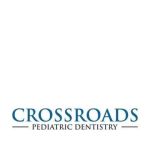What Causes Oral Thrush on the Tongue in Children?
Oral thrush, also known as oropharyngeal candidiasis, is a fungal infection caused by the overgrowth of Candida albicans, a yeast that naturally exists in the mouth. While it can affect people of all ages, children—especially infants and toddlers—are more susceptible. Understanding the causes of oral thrush on the tongue in children is essential for parents to recognize symptoms early and seek proper treatment.
The primary cause of oral thrush in children is an imbalance in the natural oral flora. Normally, good bacteria keep the yeast under control, but when this balance is disrupted, Candida multiplies rapidly and causes infection. Factors contributing to this imbalance include weakened immune systems, antibiotic use, and other health conditions.
1. Immature Immune Systems in Infants and Young Children
One of the most common reasons children develop oral thrush is their developing immune system. Babies are born with immature defenses against infections, making them vulnerable to opportunistic fungi like Candida. Their mouths provide a warm, moist environment where yeast can thrive if not kept in check.
Pediatricians often observe oral thrush in infants, especially those under six months old. This condition can sometimes develop after birth if the infant’s exposure to beneficial bacteria is limited or disrupted.
2. Antibiotic Use and Disruption of Oral Flora
Antibiotics are a lifesaver for many infections but can also unintentionally wipe out beneficial bacteria in the mouth and gut. When a child takes antibiotics, the good bacteria that keep Candida balanced may be diminished, allowing yeast to grow unchecked. This is a common trigger for oral thrush.
Parents often notice white patches on the tongue or inside the cheeks appearing shortly after a course of antibiotics. It’s important to discuss these symptoms with a healthcare provider to ensure timely treatment.
3. Use of Corticosteroid Inhalers in Children with Asthma
Children with asthma who use corticosteroid inhalers can be at risk for developing oral thrush. Steroid inhalers reduce inflammation but also suppress local immunity in the mouth. If proper mouth rinsing is not done after inhaler use, residual steroids can encourage fungal overgrowth.
Doctors recommend rinsing the mouth thoroughly after each inhaler use to reduce the risk. This practical step can prevent uncomfortable thrush infections.
4. Poor Oral Hygiene and Other Risk Factors
While infants are the most common patients, older children can also develop oral thrush, especially if oral hygiene is poor. Not brushing teeth properly or sharing utensils with infected individuals can increase the risk.
Additionally, children with certain medical conditions such as diabetes, malnutrition, or immunodeficiency disorders are more prone to candidiasis. Pacifier use and prolonged bottle feeding can also create an environment favorable for yeast growth.
Recognizing Symptoms of Oral Thrush on the Tongue in Children
Oral thrush presents with distinctive signs, making early detection easier for attentive parents. The most noticeable symptom is creamy white patches on the tongue, inner cheeks, roof of the mouth, and sometimes the throat. These patches may resemble cottage cheese and can be painful or bleed if scraped.
Children might refuse to eat or drink because of soreness. In infants, fussiness during feeding or crying without obvious cause might be the only clues. Sometimes, oral thrush is accompanied by redness or cracking at the corners of the mouth.
1. Why Early Diagnosis Matters
Prompt diagnosis can prevent oral thrush from spreading or causing complications like difficulty swallowing. If untreated, the infection can extend beyond the mouth, especially in children with weakened immune systems.
A pediatrician or dentist can usually diagnose oral thrush by visual inspection, sometimes using a swab for confirmation.
Effective Treatments and Home Care for Oral Thrush
Treating oral thrush in children generally involves antifungal medications prescribed by healthcare professionals. These can be in the form of oral suspensions or lozenges that help eliminate the yeast infection. The duration of treatment typically lasts 7 to 14 days, depending on severity.
Alongside medication, parents can take steps at home to ease symptoms and prevent recurrence. These include cleaning pacifiers and toys regularly, sterilizing feeding bottles, and maintaining good oral hygiene even in infants.
1. Natural Remedies and Comfort Measures
Some parents find that probiotics or gentle rinses with salt water can help restore balance to the mouth’s microbiome. However, these should complement, not replace, professional antifungal treatment.
Keeping the child comfortable is also important—soft, cool foods and avoiding acidic or spicy items can reduce irritation.
Preventing Oral Thrush in Children
Prevention centers on reducing risk factors and promoting oral health. Breastfeeding mothers should maintain good nipple hygiene to avoid passing yeast to infants. Limiting unnecessary antibiotic use and careful inhaler hygiene for asthmatic children also reduce risks.
Regular dental check-ups and educating older children about proper brushing and hygiene habits help keep oral thrush at bay. Awareness and proactive care are key in preventing this uncomfortable condition.
Stories From Parents: Facing Oral Thrush Together
One mother in Texas shared how her newborn developed oral thrush shortly after antibiotic treatment for an ear infection. With quick intervention from their pediatrician and strict hygiene measures at home, the thrush cleared within two weeks, and the baby returned to happy feeding.
Another family in California recounted challenges when their asthmatic child developed thrush from inhaler use. After learning about mouth rinsing post-inhalation, the condition resolved and has not recurred, highlighting how small changes can make a big difference.
These real-life experiences emphasize that with knowledge, vigilance, and support, oral thrush is manageable and preventable.
For expert advice, treatment options, and personalized care related to pediatric oral health, visit Dentistry Toothtruth to find the best services designed to support your child’s oral well-being.






 Amber L. Pearson, DDS3.0 (2 review)
Amber L. Pearson, DDS3.0 (2 review) BayView Dental Arts4.0 (964 review)
BayView Dental Arts4.0 (964 review) Crossroads Pediatric Dentistry0.0 (0 review)
Crossroads Pediatric Dentistry0.0 (0 review) Dr. Marvin R. Winter, DDS5.0 (9 review)
Dr. Marvin R. Winter, DDS5.0 (9 review) Affordable Dentures & Implants4.0 (778 review)
Affordable Dentures & Implants4.0 (778 review) Falmouth Dental Health5.0 (353 review)
Falmouth Dental Health5.0 (353 review) The Importance of Oral Health Education During Pregnancy for a Healthy Pregnancy
The Importance of Oral Health Education During Pregnancy for a Healthy Pregnancy Best Tips for Brushing Your Teeth Properly for Healthy Gums: Essential Techniques for Oral Health
Best Tips for Brushing Your Teeth Properly for Healthy Gums: Essential Techniques for Oral Health Why Skipping Dental Checkups Can Lead to Bigger Oral Health Problems
Why Skipping Dental Checkups Can Lead to Bigger Oral Health Problems Advantages of Porcelain Dental Restorations
Advantages of Porcelain Dental Restorations How Can Diabetes Cause Tooth and Gum Problems? Preventing and Managing Oral Health Issues
How Can Diabetes Cause Tooth and Gum Problems? Preventing and Managing Oral Health Issues Healthy Habits for Promoting Good Oral Health and Hygiene: Tips for a Healthy Smile
Healthy Habits for Promoting Good Oral Health and Hygiene: Tips for a Healthy Smile